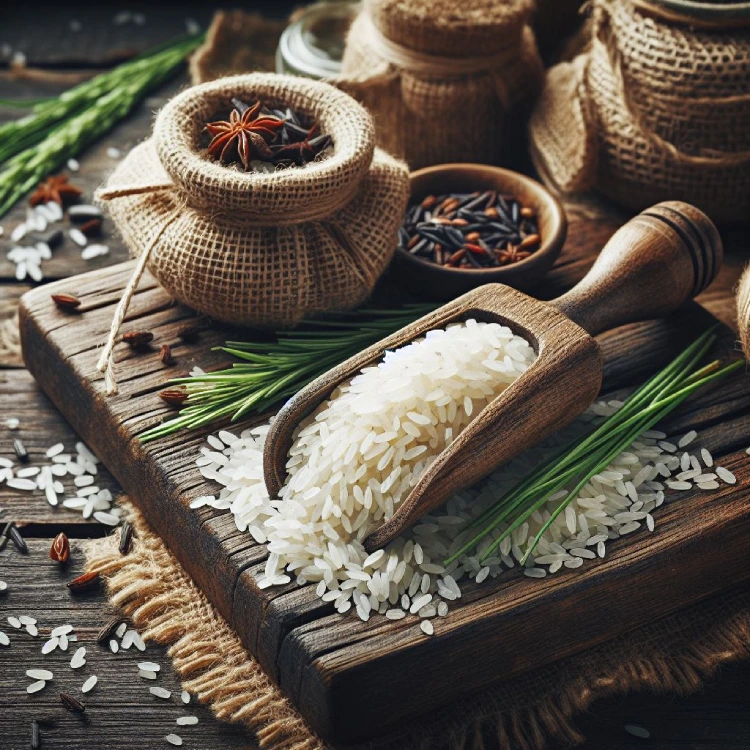Is Rice Gluten Free? Let’s Find Out!
Rice is a stable in many main and side dishes, but is it safe for Coeliacs? We find out if rice is gluten free in our deep dive.

Table of Contents
Question
Is rice gluten free?
Answer
Yes, rice is naturally gluten-free.
However, cross-contamination is possible during processing, so it’s essential to check labels for gluten-containing ingredients or potential cross-contact.
Detailed information
This includes all varieties of rice, such as white, brown, and wild rice.
Gluten is a protein found in wheat, barley, and rye, but rice does not contain this protein, making it safe for people with celiac disease or gluten intolerance to consume.
However, it’s important to be cautious about cross-contamination.
Rice can come into contact with gluten-containing grains during processing, packaging, or cooking.
To ensure that rice remains gluten-free, it’s best to purchase rice labeled as gluten-free, especially if you have celiac disease or a severe gluten intolerance.
Additionally, be mindful of how rice is prepared, particularly in shared kitchens or restaurants, to avoid cross-contamination.
What types of rice are there?
Rice is a versatile grain that comes in many varieties, each with its own unique characteristics, flavors, and uses. Here are some of the different types of rice:
1. Long Grain Rice
- Basmati Rice: Known for its fragrant aroma and long, slender grains, basmati rice is commonly used in Indian and Middle Eastern cuisines.
- Jasmine Rice: This aromatic rice has a slightly sticky texture and is a staple in Thai and Southeast Asian dishes.
- American Long Grain Rice: Commonly used in pilafs, salads, and side dishes, it has a firm, fluffy texture when cooked.
2. Medium Grain Rice
- Arborio Rice: Widely used in Italian cuisine, especially for making risotto, arborio rice has a high starch content that gives dishes a creamy texture.
- Valencia Rice: Also known as paella rice, this type of rice is used in Spanish paella and has a firm texture that absorbs flavors well.
- Calrose Rice: Popular in California and used in sushi, Calrose rice becomes slightly sticky when cooked.
3. Short Grain Rice
- Sushi Rice: A sticky rice used in sushi and other Japanese dishes. It has a slightly sweet flavor and sticky texture.
- Glutinous Rice: Also known as sticky rice or sweet rice, it is used in Asian desserts and savory dishes. Despite its name, it does not contain gluten.
- Short Grain Brown Rice: This whole grain rice retains the bran and germ, offering a chewy texture and nutty flavor.
4. Specialty Rice
- Black Rice: Also known as forbidden rice, it has a deep black color that turns purple when cooked. It is high in antioxidants and has a slightly sweet, nutty flavor.
- Red Rice: Known for its reddish-brown color and nutty taste, red rice is rich in nutrients and often used in salads and side dishes.
- Wild Rice: Not technically a rice but a grain from a different plant species, wild rice has a chewy texture and nutty flavor. It is often mixed with other types of rice.
5. Processed Rice
- Parboiled Rice: Partially boiled in the husk, this rice retains more nutrients than regular white rice and has a firmer texture.
- Instant Rice: Precooked and dehydrated for quick preparation, instant rice is convenient but may have a different texture and flavor compared to freshly cooked rice.
- Converted Rice: Similar to parboiled rice, it undergoes a process that helps retain nutrients and results in separate, fluffy grains when cooked.
6. Aromatic Rice
- Texmati Rice: A hybrid of basmati rice, grown in Texas, offering a similar aromatic quality but adapted to American growing conditions.
- Wehani Rice: A reddish-brown aromatic rice developed from basmati rice, known for its earthy flavor and chewy texture.
Each type of rice has its own culinary uses and is chosen based on the desired texture, flavor, and dish. Whether making a creamy risotto, a fragrant pilaf, or sticky sushi, there is a type of rice perfect for every recipe.
